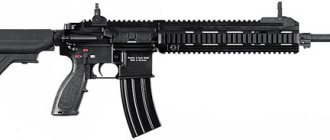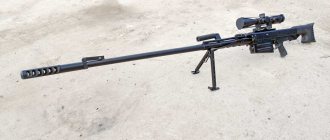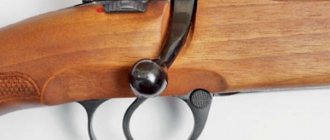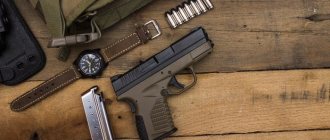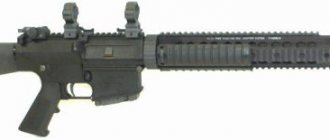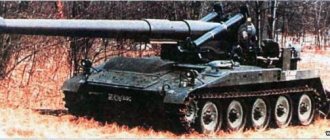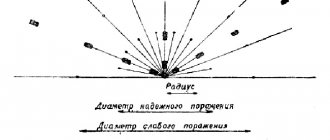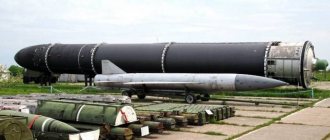- 1. History
- 2 Design details
- 3 Performance
- 4 options
- 5 users
- 6 See also
- 7 links
- 8 External links
Zastava Arms released the M76 in the mid-1970s. It has since become the standard marksman rifle in the Serbian Army and its predecessor the Yugoslav National Army (JNA). It was designed to serve the same role as the Soviet Dragunov SVD, which was to provide a dedicated sniper complement to an infantry platoon. During the Yugoslav wars of the 1990s, it was used by several sides; it saw action in Croatia, Bosnia, Macedonia and Kosovo. The M76 is reportedly being replaced in Serbian service by the Zastava M91. The Zastava M91 uses the 7.62×54mmR cartridge, which replaces the 7.92×57mm Mauser (M49/M75) cartridge in Serbian service.
Construction[edit]
The rifle is self-loading, reloading occurs due to the removal of part of the powder gases from the barrel bore. When fired, the barrel bore is locked by turning the bolt and placing it on two lugs. Despite the external resemblance to the Kalashnikov assault rifle, many elements of the M-76 had to be changed in order to adapt it to a powerful rifle cartridge. Compared to the machine gun, the length of the bolt box, its cover and the gas outlet tube have been increased. The hammer-type trigger mechanism allows firing only single shots.
The rifle has a long, heavy barrel with four right-hand rifling (rifling pitch is 240 mm) and a slotted flash suppressor of the SVD type. The cartridges are fed from a detachable ten-round box magazine.
The firing controls are located similar to a Kalashnikov assault rifle.
The rifle has a mechanical sector sight with an aimed firing range of up to 1000 meters, one sight division is 50 meters. On the left side of the receiver there is a dovetail mount for installing optical or night sights. The standard one is a 4x optical sight No. 2 (ON-2M1969) of the 1969 model.
The handguard, pistol grip and butt are made of wood. An elastic shock absorber is installed on the butt plate.
The rifle can also be equipped with a silencer and a standard bayonet.
Pistols Zastava 70 and 70(k), cartridge caliber 7.65 or 9 mm. Yugoslavia
The production program of the Zavodi Crvena Zastava (ZCZ), Belgrade, included not only the production of pistols models 57,70(d) and 67, produced under Soviet license, but also automatic pistols of the Zastava 70 and 70(k) models, developed by Yugoslav handgun designers weapons. These pistols, produced since 1970, are sometimes compared to the Model 70(d), also called the Model 65, a Yugoslav licensed version of the Soviet Tokarev TT 33 pistol. But this is not the case.
see also
- Dragunov sniper rifle
- List of sniper rifles
| This is a draft article about a sniper rifle. You can help the project by adding to it. |
| ATS | AK-55/AMD-63 • ČZ 2000 • Kbk AK/Kbkg wz. 60 • Kbk wz. 88 Tantal • PM md. 63 • PA md. 86 • MPi • NGM-81 • Wieger StG-940 |
| Others | AR-M1 • APS 95 • EMER K-3 • Galil • Galil ACE • INSAS • Kbk wz. 96 Beryl • Valmet Rk. 62, 76, 95 • Vektor R4 • Truvelo Raptor • Zastava (M21 • M64/M70 • M77B1 • M80 • M90) • Type 56 • Type 81 • Khazri |
| 300 mm barrel | AMD-65 • AMP-69 • AK-102/104/105 • MPi-AKS-74NK • KALANTAK • PM md. 80/ |
| Rifles and machine guns | Mauser 98k • M24/47 • Zastava M48 • Zastava M59 Papovka • Zastava M70 |
| Sniper rifles | Mosin-Nagant M91/30 PU • Zastava M69 • Zastava M76 |
| Submachine guns | Beretta M38 • MP-40 • PPŠ-41 • Zastava M49 • Zastava M56 • Zastava M84 Škorpijon |
| Machine guns | M2 Browning • DŠK • Zastava M02 Kojot • Zastava M53 Šarac • Zastava M72 • Zastava M84 |
| Grenade launchers | M79 Osa • M80 Zolja • Strela-2 |
| Ammo | 7.65 × 17 mm • 7.62 × 25 mm TT • 9 × 19 mm Parabellum • 7.62 × 39 mm • 7.62 × 54 mm R • 7.92 × 57 mm • 12.7 × 99 mm NATO • 12.7 × 108 mm |
| Slot machines | HK MP5 • Zastava M21 • Zastava M70 • Zastava M77B1 • Zastava M80 • Zastava M85 • Zastava M90 • Zastava M92 |
| Machine guns | Zastava M02 "Coyote" • Zastava M72 • Zastava M77 • Zastava M84 • Zastava M87 |
| Sniper rifles | Zastava M07 • Zastava M76 • Zastava M91 • Zastava M93 “Crna strela” |
| Grenade launchers | Zastava M93 • M-80 “Zola” • M-79 “Osa” • M-90 “Strshlen” |
| ATGM | 9M14 “Malyutka” • 9K111 “Bassoon” • 3M6 “Bumblebee” • “Bumbar” |
| Artillery | M74 mortar • M75 mortar • M46 cannon • D30 howitzer • M84 “Nora” howitzer • 2S1 “Gvozdika” self-propelled gun • B52 “Nora” self-propelled gun • SVLR M94 “Plamen-S” • SVLR M77 “Ogan” • SVLR M87 “Orkan” |
| Air defense systems | 40 mm L/70 “Bofors” • LPRS 9K310 “Igla” • LPRS 9K32M “Strela-2M” • RS 9P31M “Strela-1” • RS 9K35M “Strela-10M” |
| Cars | UAZ-469 • Pinzgauer 710M • Puch 300 • Land Rover • TAM 80 • TAM 110 • TAM 150 • TAM 5000 • FAP 1118 • FAP 2228 • FAP 2026 • FAP 2632 • ZIL-131 |
| Armored vehicles | BOV M86 • BOV M83 • BRDM-2 • BTR-50 • BVP M80 • T-72 • M-84 • M-84AS • Lazar • VIU-55 “Muya” |
| Slot machines | M70 • M80 • M85 • M90 • M92 • M95 • M99 • M21 • M77 |
| Submachine guns | M1942 • M1944 • M1945 • M49 • M51 • M56 • M65 • M84 • M97 • FLG |
| Smoothbore guns | LK M48 • LK M70 • LP M75 • LP M80 • LK M808 • LK M85 • LP M91 • LK M98 • LP 12 PA • LP 12 PAS • MP 12 PA |
| Self-loading rifles | M1924 • M48 • M98/48 • M59/66 |
| Sniper rifles | M76 • M91 • M93 • M07 • M12 |
| Machine guns | M1937 • M53 • M72 • M77 • M82 • M84 • M02 Coyote |
| Anti-aircraft weapons | M55 |
| Pneumatic and sporting weapons | GP45 • PAP M70 • PAP M77 • PAP M85 • PAP M92 • VP97 |
Airsoft rifle ASG Zastava M70 Varmint (16062)
| Manufacturer: | ASG (Denmark) |
| Caliber: | 6.0 mm (.236) |
| Combat prototype: | carbine Zastava M70 .308 Win (Serbia) |
| Based on the operating principle (?): | spring (spring) |
| Energy Source: | spring, manual cocking |
| Muzzle energy: | 1.7 J |
| Ammunition: | balls 6 mm |
| Store type: | bunker |
| Magazine capacity: | 24 |
| Blowback (?): | No |
| Shot speed: | 131 m/s |
| Hop-up (?): | yes, adjustable |
| Material: | ABS plastic with wood effect; Aluminium alloy |
| Shooting mode (?): | single |
| Weaver/Picatinny rail: | There is |
| Length: | 1110 mm, barrel - 580 mm |
| Weight: | 2600 g |
| Equipment (?): | rifle, magazine, instructions |
| Certificate: |
Description of the ASG Zastava M70 Varmint airsoft rifle:
The ASG Zastava M70 Varmint airsoft rifle (16062) is a spring-piston modification of a Serbian-made combat carbine, manufactured by ASG under license. The product accurately replicates the appearance and main parameters of the combat prototype, and is distinguished by high build quality.
The source of energy here is a spring; it is cocked manually. Firing is possible only in single shots, ammunition is 6 mm balls, the capacity of the bunker type magazine is 24 units.
The rifle shows a good shot speed for an airsoft weapon - 131 m/s. An adjustable hop-up chamber is installed, which is responsible for the ball's flight range and its stability. Muzzle energy – 1.7 J.
The manufacturer claims the ability to hit targets at a range of up to 50 meters.
There are no open-type sights, but there is a Picatinny rail that allows you to install optics on the rifle. The ASG Zastava M70 Varmint is distinguished by high quality workmanship - for example, the stock made of ABS plastic, reminiscent of wood, is almost impossible to distinguish from natural wood.
The main components of the weapon are made of high quality aluminum alloy. The rifle weighs 2.6 kg, the total length is 111 cm. It is equipped with an instruction manual and a bunker magazine.
ASG Zastava M70 Varmint is an excellent choice for connoisseurs of high-quality airsoft weapons, a reliable and durable rifle.
Information about the characteristics, configuration, appearance and color of the product is for informational purposes only.
; they are subject to change by the manufacturer without notice.
Production of standard variants
The Mauser M1924 rifle became the first Mauser rifle to be produced in Yugoslavia (in the country it received the index M24
).
Its predecessor was the Belgian rifle FN Model 1924
, produced in Belgium at the factories of the FN Herstal company for the Royal Yugoslav Army, but then the Ministry of Defense of the Kingdom of Yugoslavia and FN signed a contract to acquire a license for the production of rifles. Most M24 rifles in Yugoslavia were produced at the Kragujevac Arsenal and were assembled mainly before the outbreak of World War II or directly during the war.
In the post-war years, new rifles like M24/47
and
M24/52
, which were assembled in Yugoslavia on the basis of old models and were supplemented with new Belgian parts. The numbers 47 and 52 indicate the years in which production of each model began. Production of the models was carried out in parallel with the new M48 rifles, and both versions were practically no different.
Yugoslav variant
In Yugoslavia, the rifle was produced under the official name M1924 CHK / M1924 ČK
specifically commissioned by the armed forces of the Kingdom of Yugoslavia [1]. The abbreviation “Chetnik” means “Chetnik carbine”, and the pre-war Yugoslav Chetniks, considered an elite special forces unit of the Yugoslav army, primarily used this rifle as their main weapon.
It is not known for certain how many purely Yugoslav rifles were produced (taking into account all variants, there are 1 million copies of the M1924), however, based on data on mass production, we can conclude that the number did not exceed 3 thousand copies. Three copies of the rifle are kept in museums in the former Yugoslavia: one in the Military Museum in Belgrade, one in the Museum of the Revolution in Ljubljana and one in the Zastava Arms Museum. It is believed that rifle production in Kragujevac began no earlier than May 1940.
In a structural sense, the rifle resembled the original Belgian version. The bolt handle was curved for greater convenience when firing and increasing the rate of fire (a similar bolt was retained in the M48). The barrel length was 415 mm, and the length of the entire rifle was 955 mm [2]. Some versions were made with a belt, which allowed the soldier to carry the rifle for a long time without getting too tired, and to shoot from a more comfortable position with less effort. However, the rifle also had its drawbacks: the sound of the shot was too loud and made it easy to detect the shooter in an ambush, and the recoil was too strong. There are no exact data on the initial rate of fire and accuracy, but it is possible that they did not differ from the data on the conventional FN Model 1924 rifle.
In Yugoslavia, in addition to the main Chetnik version, the so-called “Sokol” carbine was also produced - a shortened version of the Chetnik rifle, which was lighter in weight, but had a shorter firing range. Both versions were accompanied by a double-edged bayonet, made in the style of the Comite kama of the Balkan Wars. The handle of the knife, which resembled the handle of a Turkish dagger [3], was often depicted with a skull and bones - a symbol of the Chetnik troops [4]. The knife in Western European literature was often called the “dagger of King Alexander’s guard.”
Rifles were in service with Yugoslav units both before and during World War II: the Yugoslav Chetniks and Yugoslav communist partisans had quite a few of them. The bayonet-knife was called “kolasinac” in Yugoslavia and was the main bladed weapon of the Chetniks and partisans: it was worn by the so-called “kolyachis” - Chetniks who personally executed traitors, prisoners and spies, cutting the throats of those sentenced to death with this knife. In the German army, captured rifles were in service with the Wehrmacht and SS under the name G289(j)
or the full name “Jugoslawisches Komitengewehr 7.9mm”.
Excerpt characterizing Zastava M76
Pierre was not, as before, in moments of despair, melancholy and disgust for life; but the same illness, which had previously expressed itself in sharp attacks, was driven inside and did not leave him for a moment. "For what? For what? What is going on in the world?” he asked himself in bewilderment several times a day, involuntarily beginning to ponder the meaning of the phenomena of life; but knowing from experience that there were no answers to these questions, he hastily tried to turn away from them, took up a book, or hurried to the club, or to Apollo Nikolaevich to chat about city gossip. “Elena Vasilievna, who has never loved anything except her body and is one of the stupidest women in the world,” thought Pierre, “seems to people to be the height of intelligence and sophistication, and they bow before her. Napoleon Bonaparte was despised by everyone as long as he was great, and since he became a pathetic comedian, Emperor Franz has been trying to offer him his daughter as an illegitimate wife. The Spaniards send up prayers to God through the Catholic clergy in gratitude for the fact that they defeated the French on June 14th, and the French send up prayers through the same Catholic clergy that they defeated the Spaniards on June 14th. My brother Masons swear on blood that they are ready to sacrifice everything for their neighbor, and do not pay one ruble each for the collection of the poor and intrigue Astraeus against the Seekers of Manna, and are busy about the real Scottish carpet and about an act, the meaning of which is not known even to those who wrote it, and which no one needs. We all profess the Christian law of forgiveness of insults and love for one’s neighbor - the law, as a result of which we erected forty forty churches in Moscow, and yesterday we whipped a fleeing man, and the servant of the same law of love and forgiveness, the priest, allowed the cross to be kissed by a soldier before execution.” . So thought Pierre, and this whole, common, universally recognized lie, no matter how accustomed he was to it, as if it were something new, amazed him every time. “I understand these lies and confusion,” he thought, “but how can I tell them everything that I understand? I tried and always found that deep down in their souls they understand the same thing as me, but they just try not to see it. So it must be so! But for me, where should I go?” thought Pierre. He experienced the unfortunate ability of many, especially Russian people - the ability to see and believe in the possibility of good and truth, and to see too clearly the evil and lies of life in order to be able to take a serious part in it. Every area of labor in his eyes was associated with evil and deception. Whatever he tried to be, whatever he undertook, evil and lies repulsed him and blocked all paths of activity for him. Meanwhile, I had to live, I had to be busy. It was too scary to be under the yoke of these insoluble questions of life, and he gave himself up to his first hobbies just to forget them. He traveled to all sorts of societies, drank a lot, bought paintings and built, and most importantly read. He read and read everything that came to hand, and read so that, having arrived home, when the footmen were still undressing him, he, having already taken a book, read - and from reading he passed on to sleep, and from sleep to chatting in the drawing rooms and club, from chatter to revelry and women, from revelry back to chatter, reading and wine. Drinking wine became more and more a physical and at the same time a moral need for him. Despite the fact that the doctors told him that, given his corruption, wine was dangerous for him, he drank a lot. He felt quite good only when, without noticing how, having poured several glasses of wine into his large mouth, he experienced a pleasant warmth in his body, tenderness for all his neighbors and the readiness of his mind to respond superficially to every thought, without delving into its essence. Only after drinking a bottle and two wines did he vaguely realize that the tangled, terrible knot of life that had terrified him before was not as terrible as he thought. With a noise in his head, chatting, listening to conversations or reading after lunch and dinner, he constantly saw this knot, from some side of it. But only under the influence of wine did he say to himself: “It’s nothing. I will unravel this - so I have an explanation ready. But now there’s no time—I’ll think about all this later!” But this never came afterwards.
